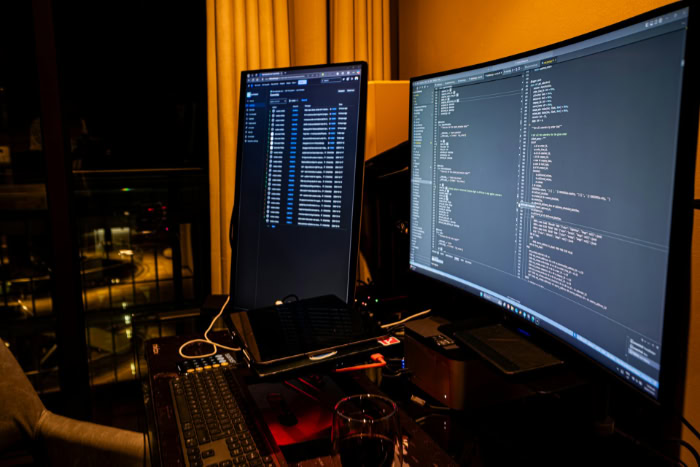Windows vs. macOS vs. Linux: All You Need to Know

Picking the right operating system can shape your daily experience, from how efficiently you work to the tools you can access and how much you spend. Windows, macOS, and Linux each offer unique strengths, quirks, and challenges, making the decision far from one-size-fits-all.
Personal security, creative workflows, gaming, hardware preferences, and even the sense of control you want over your device all come into play. With so many factors in the mix, even tech-savvy users can struggle to match their needs to the right platform.
Software Ecosystem and Compatibility
Selecting an operating system often starts with a straightforward question: Will it run the apps you need? The software ecosystem shapes the daily user experience, dictating everything from the office tools at your fingertips to entertainment options.
Differences in app availability, how programs are distributed, and workarounds for compatibility hurdles can greatly influence productivity and satisfaction.
Availability of Everyday Applications
Everyday tasks rely on a mix of office suites, web browsers, media players, and editing tools. Windows offers the broadest support for popular applications, including the full Microsoft Office suite, a variety of web browsers, and the largest collection of PC games, thanks in part to DirectX and the popularity of Steam.
macOS users find polished alternatives as well, such as Pages and Numbers for productivity, industry-leading creative apps like Final Cut Pro, and native support for browsers including Safari and Chrome. The Mac App Store streamlines finding and installing verified software.
Linux distributions typically include a comprehensive set of open-source tools from the start, with LibreOffice, Firefox, and GIMP among the popular options. While many mainstream commercial applications are not available natively on Linux, alternatives often exist.
Gaming on Linux remains challenging compared to Windows, but ongoing improvements such as Valve’s Proton and tools like Lutris have brought thousands of Windows-only games to Linux users, often with solid performance.
Professional and Niche Software
Specialized workflows can quickly tip the balance toward one system. Creative professionals frequently choose macOS for software like Logic Pro, Final Cut Pro, and the macOS versions of Adobe Creative Cloud apps, where performance and interface polish stand out.
Windows, on the other hand, is essential for many engineers, architects, and game developers, with leading solutions in CAD, 3D modeling, and scientific applications running natively only on Windows.
Linux shines in scientific computing, server management, computer science, and open-source programming. Developers benefit from built-in access to powerful compilers, scripting languages, and networking tools.
Integrated Development Environments (IDEs), text editors, and version control systems are tightly woven into most Linux distributions, making it a favorite in tech and academia.
App Distribution Models
How you get your applications can affect security, ease of updates, and overall user experience. Windows leans on both the Microsoft Store and a long tradition of manual downloads from developer websites or third-party providers.
Installing software is easy, but it sometimes brings risks with unwanted extras or malware.
macOS users can rely on the Mac App Store for vetted apps, while still enjoying the flexibility to install software from outside sources. This dual model strikes a balance between convenience and choice, though Apple’s security measures prompt extra warnings when running unverified software.
Linux adopts a community-driven approach with centralized package managers such as APT, DNF, or Pacman, depending on the distribution. The process of searching, installing, and updating software is typically straightforward and automated, and it gives users access to vast repositories of both official and community-maintained packages.
For more recent commercial software or specialized tools, manual installation and use of included commands is sometimes necessary.
Cross-Platform Workarounds
Compatibility gaps are less of a wall and more of a hurdle today, thanks to innovative workarounds. Virtual machines allow Linux, Windows, or macOS to run within each other for isolated tasks, development, or legacy apps.
Windows Subsystem for Linux (WSL) gives Windows users powerful access to a full Linux environment directly on their PCs. On Linux, Wine and Proton translate many Windows applications and games, closing much of the compatibility gap for software and entertainment.
Cross-platform solutions continue to improve, but native support remains the gold standard for stability and ease. The right operating system should make it easy and reliable to run the software you need most, without constant tinkering or complex fixes.
A close look at your essential apps can quickly highlight which platform fits best.
Performance, Hardware, and Cost

Performance, hardware flexibility, and overall cost often weigh heavily in any operating system decision. The right match can unlock smooth multitasking, long battery life, and less hassle with peripherals.
Each platform takes a different approach to hardware support, system optimization, and the costs required over both the short and long term.
Hardware Requirements and Optimization
Apple’s macOS is tightly bound to its own hardware, most notably the Apple Silicon chips such as the M1 and M2 series. This close integration allows Apple to tune performance and efficiency at a level few competitors can match.
The result is brisk responsiveness in creative tasks, better battery life, and a seamless user experience, though the trade-off is limited customization and hardware selection.
Windows stands apart in supporting a huge variety of desktops, laptops, and custom-built PCs. From powerful gaming rigs to budget laptops spanning multiple manufacturers, Windows' flexibility empowers users with different needs and price points.
However, this broad compatibility can result in inconsistent performance, as not all hardware combinations are equally optimized. Careful driver updates and hardware choices often become important to achieve smooth operation.
Linux is renowned for its adaptability. It runs on everything from high-end workstations to aging laptops and even Raspberry Pi boards.
Lightweight distributions can deliver a usable desktop experience on hardware that struggles with other systems. Advanced users frequently choose Linux to breathe new life into older devices or to fully customize their environment according to the hardware available.
Licensing and Total Cost of Ownership
Cost considerations go beyond the sticker price of the device. Apple products come with macOS included, but the hardware itself is sold at a premium, often reflecting its build quality, display technology, and support ecosystem.
Microsoft Windows may be bundled with a new PC or require a standalone license, which adds to the expense, especially for custom builds or enterprise use. Upgrades to major new versions are sometimes free, but organizations may encounter charges for specialized editions or support plans.
Linux stands out for its open-source roots. Most distributions are entirely free, and even the most full-featured options rarely require payment for personal or professional use.
This can result in considerable savings for users able to set up their own systems and for organizations deploying dozens or hundreds of machines.
Battery Life and Resource Efficiency on Laptops
Energy efficiency and resource management can dramatically impact everyday satisfaction, especially for laptop users. Apple’s transition to custom silicon resulted in standout battery life across its MacBook lineup, a benefit of both power-efficient chip design and software controlled end-to-end by Apple.
Windows laptops display a wider range of battery performance, partly due to differences in hardware quality and power management. Premium models from established manufacturers often compete closely with Apple, while lower-cost devices may lag behind if optimization is lacking.
Linux offers resource-efficient performance, with many distributions running smoothly on even modest or aging hardware. While lightweight desktops maximize battery life, some users encounter minor hiccups with power management or sleep features, as support for energy-saving modes can vary by distribution and laptop model.
Driver Support and Peripheral Compatibility
Seamless use of printers, external displays, audio devices, and specialty hardware relies on robust driver support. Windows enjoys broad compatibility with mainstream peripherals and continually updated drivers, making it easy for users to add new hardware with minimal fuss.
Niche or proprietary equipment is often designed primarily for Windows first.
macOS features reliable plug-and-play support for many popular devices, especially those within Apple's own accessory lineup. Support for third-party printers, monitors, and audio gear is strong, though certain specialized or legacy devices may require extra steps or third-party downloads.
Linux’s growing hardware support covers an impressive range of devices, but new or uncommon components sometimes present challenges. Official drivers may not be available for every peripheral, especially for the latest models of graphics cards, Wi-Fi adapters, or printers.
The open-source community often steps in with alternative solutions, but setup may require research or command-line intervention.
The practical experience is shaped not just by raw hardware capability, but by how well the operating system falls in line with your performance demands, upgrade plans, and wallet. Factoring in everything from energy efficiency to device compatibility, an honest look at your needs will make the choice far smoother.
Security, Privacy, and Reliability

Security and privacy are top priorities for anyone using a computer to store personal files, photos, or work documents. Stable system performance and reliable updates provide peace of mind against both cyber threats and everyday hiccups.
Each operating system has developed distinct tools and philosophies for protection, data collection, and software maintenance. Looking at their built-in defenses, patterns of malware, and update systems can help separate marketing promise from real-world safety and dependability.
Built-in Defenses
Windows, macOS, and Linux each employ their own strategies to protect users. Windows relies on Windows Defender, which delivers always-on antivirus and firewall protection for most users.
System integrity is further guarded by Secure Boot, UAC (User Account Control), and frequent security patches. Most threats target Windows due to its popularity, so regular updates and browsing caution are especially important on this platform.
macOS approaches defense with Gatekeeper and XProtect, which scan software for safety and restrict access to verified applications. System Integrity Protection (SIP) and sandboxing help block rogue apps from making unauthorized changes.
Apple tightly controls what runs on its devices, so many threats are filtered before they ever reach the user.
Linux leans on strong permissions and user isolation at its core. Users rarely operate with full system privileges, making it difficult for malware to spread or do harm.
Advanced tools such as SELinux or AppArmor can lock down system components even further, adding extra layers for those who want rigorous security.
Malware Prevalence and Attack Surface Size
Popularity can influence how likely an operating system is targeted by criminals. Windows faces the largest number of malware variants simply due to its dominant share of the desktop market.
Attackers often focus on common file types and exploits, so using updated software and safe browsing practices is important. macOS users see far fewer infections, but the rise of Mac-specific malware and phishing shows no platform is immune.
Linux, while sometimes viewed as more secure, tends to be targeted less often in desktop environments. Servers running Linux have their own risks and require specialized attention, especially in enterprise settings.
Update Mechanisms and Patch Cadence
The security of any operating system depends on how quickly and automatically it patches vulnerabilities. Windows regularly delivers updates through Windows Update, providing security fixes and feature enhancements on a predictable schedule.
Occasional restart prompts may frustrate some, but timely patching closes known exploits.
macOS also updates seamlessly, combining security releases with feature upgrades multiple times a year. Automatic updates are available, and users can install urgent program and driver updates through the App Store.
Major new versions are free for supported hardware, which helps ensure broad adoption of the latest defenses.
Linux distributions rely on package managers to push updates for both system software and applications. Users often enjoy fine-grained control, choosing when and how to apply changes.
Some distros emphasize stability with slow, well-tested updates, while others offer “rolling release” models for cutting-edge features and security. The pace and reliability of updates often depend on the distribution and community support.
Data Collection Policies and User-Controlled Privacy Settings
How operating systems handle personal data has become an important talking point. Windows collects a range of diagnostic and usage data for bug tracking, user experience improvement, and targeted advertising.
While privacy controls exist, Microsoft requires some data to be sent, especially for home edition users, which has sparked debates about transparency.
macOS collects device analytics and crash reports, but users can opt out of most data collection and targeted advertising. Apple’s public focus on privacy encourages users to review permissions for location, microphone, and camera access, offering easier ways to limit what apps can see and do.
Linux stands apart with a philosophy that assumes privacy by default. Open-source code allows the public to inspect what data (if any) is collected, and most distributions send no telemetry without explicit consent.
Users enjoy granular control and few hidden processes, supporting those who value their anonymity or want to keep sensitive work and personal routines private.
Customization, Usability, and Learning Curve

Comfort with an operating system depends on how naturally it fits your style, how much control you want over its appearance and behavior, and how quickly you can get up to speed. While some platforms focus on streamlined simplicity, others open the door for endless tweaking.
Supportive communities and clear documentation can make even the steepest learning curves easier to climb, and accessibility features play a vital role in creating an inclusive computing experience.
User Interface Flexibility
Windows prioritizes familiarity, maintaining a user interface that millions have known for decades. The Start menu, taskbar, and file explorer receive regular updates but rarely make radical changes, supporting users who value consistency.
Personalization is available through wallpapers, color schemes, desktop widgets, and limited theme options. Power users can find third-party programs to customize visuals more deeply, though such changes may not always integrate smoothly.
macOS takes a different approach with its clean, unified interface. Apple focuses on elegance and ease, keeping customization options limited so that the entire system remains visually cohesive.
Users can change desktops, adjust accent colors, and rearrange the Dock, but interface elements are mostly fixed by design. For those who like having things “just work,” macOS rarely requires adjustments out of the box.
Linux stands alone in its capacity for transformation. Dozens of desktop environments, window managers, and themes allow users to sculpt everything from button arrangement to system fonts and gestures.
Those willing to invest time can create a desktop that looks and acts exactly as desired, whether minimalist for speed or full-featured with a personalized touch. Even lightweight distributions offer multiple user interface options, making Linux appealing to both tinkerers and traditionalists.
Out-of-the-Box Ease of Use
Quick setup and simple navigation often make a strong first impression. Windows offers onboarding tools and broad compatibility with both old and new hardware, so most users feel comfortable getting started.
Occasional prompts for updates or privacy settings may interrupt at first, but otherwise, daily tasks need little intervention.
macOS shines for users who want a system ready to go with minimal fuss. Apple’s setup process is quick, and most features are explained as you use them for the first time.
The system is designed for intuitive gestures, clear notifications, and logical organization, inviting users to start working or playing right away. For many, the trade-off for this simplicity is fewer built-in ways to customize beneath the surface.
Linux, depending on the distribution, can vary from incredibly accessible to highly technical. User-friendly options such as Ubuntu and Linux Mint aim to provide strong defaults and helpful guides during setup.
More advanced distributions hand control back to the user, requiring manual partitioning, package selection, and configuration. For those who value tunability, Linux offers the greatest rewards, but new users may feel overwhelmed without community help or documentation.
Community Support and Documentation Quality
Supporting users at every level, robust communities represent a vital resource. Windows benefits from a vast network of forums, online guides, and how-to videos addressing nearly every imaginable issue.
Professional support and long-established manuals also help Windows remain within reach for nearly everyone.
macOS enjoys detailed official documentation from Apple and a knowledgeable user base always willing to provide tips and solutions. Apple’s support site offers high-quality troubleshooting tools, and enthusiastic online communities fill in gaps for more advanced advice or troubleshooting.
Linux’s community-driven support is famous for being both broad and deep. Open-source advocates maintain extensive wikis, forums, and live chat help for nearly every distribution and use case.
While beginners sometimes struggle with highly technical answers, they also benefit from extensive user guides aimed at making common tasks and troubleshooting more approachable.
Accessibility Features and Multilingual Support
Making computing accessible to all users is an essential priority. Windows ships with a wide range of tools for users with visual, auditory, or mobility impairments.
Built-in speech recognition, screen magnifiers, narrator functions, and customizable shortcuts allow more people to navigate comfortably. Multilingual support is robust, with interface languages and input methods for nearly every region.
macOS provides thoughtful accessibility features such as VoiceOver, dynamic text size changes, dictation, and color filters. International users benefit from robust language support, easy switching among keyboards, and regional spell check.
Linux distributions have made significant progress in recent years on accessibility, integrating screen readers, onscreen keyboards, and zoom functions into desktops. The open nature of Linux sometimes leads to inconsistent quality between distributions or software titles, but popular environments have steadily improved year over year.
Language support covers nearly every major set of characters, though setup steps may not be quite as streamlined as commercial alternatives.
Combined, these differences shape not only how you see and use your device, but also how freely you can tailor it to fit your needs or adapt as your skills grow.
Specialized Workflows and Ecosystem Integration

Modern computers are about more than basic productivity. Many professionals and enthusiasts demand tools tailored to their work, seamless synchronization across devices, and reliable integration into broader technology environments.
From coding and creative projects to gaming and enterprise management, each operating system brings its own strengths and ecosystem alliances that can shape the way you work, play, and collaborate.
Development Environments
Developers often have firm opinions about their preferred platform. Linux is praised for its native Unix-based environment, powerful shell utilities, scripting languages, and direct access to source code.
Package managers and open-source toolchains make Linux ideal for software development, web servers, and containerized workflows using Docker or Kubernetes. Updates and patches are released quickly, giving developers the flexibility to experiment with the latest libraries and features.
macOS is also Unix-based, which brings access to robust command-line tools while still providing a refined desktop experience. Many developers favor macOS because of its compatibility with popular programming languages, frameworks like Homebrew, and essential development tools such as Terminal and Xcode for building apps in the Apple ecosystem.
The macOS interface, combined with powerful under-the-hood capabilities, appeals to those who want stability and Unix flexibility.
Windows has traditionally lagged in native Unix support, but recent improvements have narrowed the gap dramatically. Windows Subsystem for Linux (WSL) now runs genuine Linux distributions alongside Windows applications, making it easier to use powerful Unix tools and workflows.
Developers still benefit from the robust support of Visual Studio, a thriving PowerShell ecosystem, and rich compatibility with commercial software and game engines.
Gaming Experience
Gaming has long been an area where operating systems differ dramatically. Windows enjoys the broadest compatibility with PC games, driven by the prevalence of DirectX, regular driver updates, and attention from both hardware and software developers.
The majority of the gaming industry focuses on Windows first, leading to the fastest adoption of new graphics features and the largest gaming libraries, including support from major services like Steam and Xbox.
macOS provides a solid experience for casual gaming but falls behind for high-end or competitive play. Apple’s Metal graphics API serves its hardware well, but the number of titles natively available for macOS lags far behind Windows.
Some games run smoothly on recent Apple Silicon, and cloud gaming services now offer more options for Mac users, but top-tier releases and extensive modding communities remain limited.
Linux has made remarkable strides in gaming, spurred by innovations like Proton and Steam Play, which enable many Windows games to run on Linux with minimal tweaks. Vulkan, an open-source graphics API, contributes to growing performance and compatibility, yet a significant portion of new and exclusive games remain unavailable or require extra setup.
Gaming laptops for Linux often need careful hardware selection to ensure driver support is robust, but dedicated enthusiasts demonstrate impressive results.
Device and Cloud Ecosystem Tie-Ins
Ecosystem integration now influences more than convenience; it can affect workflow, security, and even creative inspiration. Apple’s closed ecosystem tightly connects macOS with iPhone, iPad, Apple Watch, and iCloud, delivering smooth features like universal clipboard, AirDrop, Handoff, and iMessage synchronization.
Creative professionals, students, and anyone focused on a single brand can benefit from seamless continuity across all devices.
Windows seamlessly connects with Microsoft 365, OneDrive, and Surface devices, offering a familiar office experience and deep integration with enterprise email, calendars, and contacts. Features like Phone Link and cross-device copy–paste cater to users in Microsoft’s ecosystem.
For hybrid environments, Windows provides strong compatibility with both personal and IT-managed devices.
Linux serves as the home base for open-source and cross-platform cloud tools, container orchestration, and remote desktop solutions. Less tied to hardware manufacturers, Linux users have flexibility to interact across a range of devices and services, including synchronization with Google Drive, Nextcloud, and other decentralized solutions.
While mainstream mobile-device integration is less polished, open projects and powerful scripting options permit customized automation and network management.
Enterprise and IT Management Capabilities
Managing technology at scale brings different needs from those of individual users. Windows continues to lead in enterprise environments due to its compatibility with Active Directory, widespread MDM (Mobile Device Management) solutions, and granular group policy controls.
Centralized update and patch management, power user tools, and broad third-party support have kept Windows at the center of IT operations in many organizations.
macOS has gained popularity in creative agencies, startups, and education, thanks to its straightforward MDM offerings, Apple School/Business Manager, and integration with corporate cloud services. Apple’s approach simplifies updates and device enrollment, making it easier for smaller teams to support many Macs at once.
Security and privacy remain priorities even in larger rollouts.
Linux powers a large majority of servers, workstations in science and engineering, and cloud infrastructure. Package repositories, remote management tools, and detailed user permissions provide secure, cost-effective control.
IT teams can automate nearly every aspect of a Linux deployment and configure granular firewall rules, SELinux profiles, and network monitoring, which appeals to technical professionals seeking efficiency and transparency.
The workflows and integrations you rely on every day will often reveal the best platform for your specific needs, whether for code, creative work, gaming, or managing big teams of devices. Each system offers unique perks, and every choice shapes how smoothly your technology fits into your world.
Conclusion
No single operating system dominates every category; each truly shines in different situations. Windows stands out for its unparalleled software compatibility, especially with professional programs and games, plus broad support for diverse hardware.
macOS wins over users seeking cohesive design, smooth continuity across Apple devices, and a polished experience right from the first boot. Linux offers unmatched customization, freedom from licensing costs, and a development-friendly environment that runs on anything from modern workstations to older PCs.
The ideal choice really hinges on what matters most to you. Those who value seamless integration and creative workflows may gravitate to macOS.
Gamers, engineers, and anyone needing access to the broadest range of commercial applications often stick with Windows. Tinkerers, privacy advocates, and software developers find their home in Linux, where nearly everything is open to modification.
Think about the software you depend on, your hardware investment, your preferences for privacy and security, and how much flexibility you want to have. Taking time to match your needs with the strengths of each platform can lead to a technology experience that feels natural, efficient, and even inspiring.
The best OS is the one that helps you do your best work while feeling comfortable and confident every step of the way.


